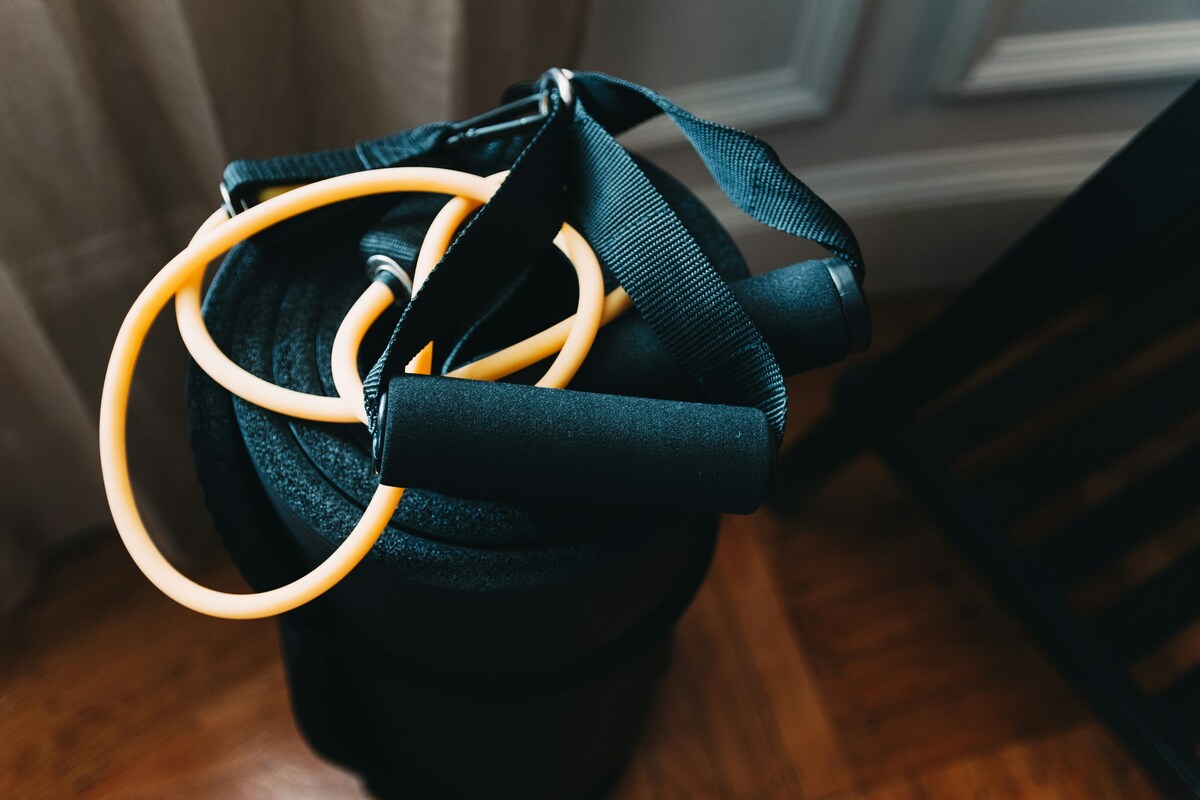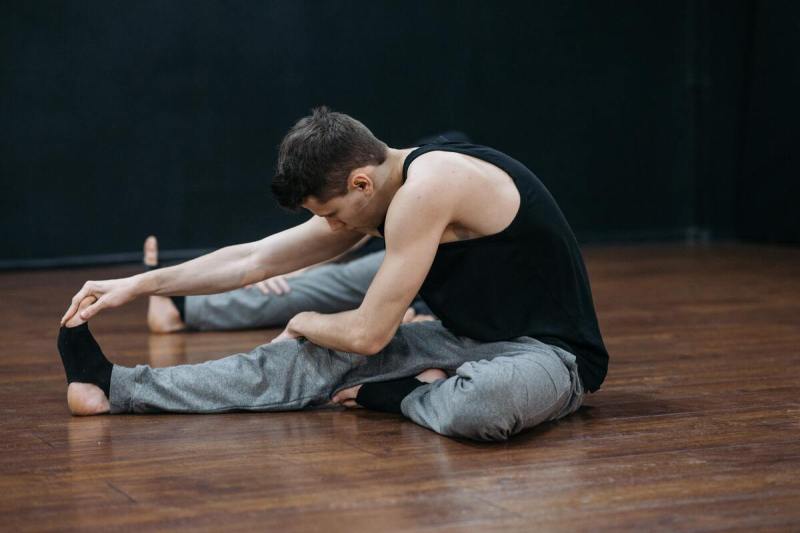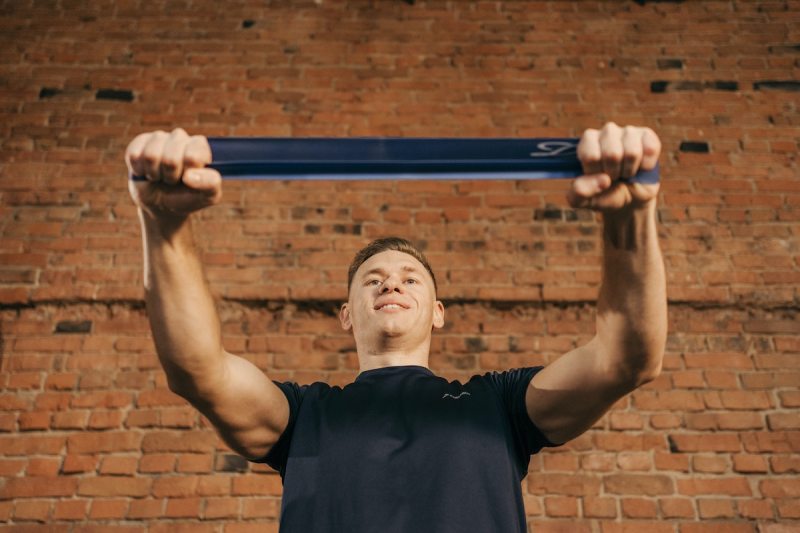When trying to get bigger thighs, you may tend to focus on the quads because they are right in front of you — they are what you see when you look in the mirror. However, for well-rounded aesthetics and strength in your legs, you want to perform abductor and adductor movements, as well as hamstring exercises.
Developed hamstrings complement your quads and make your thighs bigger in general. There are many resistance band hamstring workout options, and you can perform them anywhere as long as you have the right bands.
Because resistance bands are versatile, you can also use them for mobility exercises to strengthen your joints and increase your range of motion. Now that you know that, let’s get into some of the resistance band exercises that are sure to develop your hamstrings.
Can you work your hamstrings with resistance bands?

Resistance bands are versatile strength training tools that can be used to grow various muscle groups, including the hamstrings. The muscles in the lower body are some of the strongest in the body, and as a result, many people can’t fathom torching them with what they deem “glorified rubber bands.”
However, research has shown that resistance bands and weights can produce similar strength gains in different populations. So, if you don’t think resistance bands can build lower-body muscle, you should reconsider. These tools create constant tension in your muscles, instigating muscle growth set after set.
How can you stretch your hamstrings with a resistance band?

Research has shown that stretching can improve the range of motion and also enhance joint and muscle properties. The hamstrings, in particular, can get tight, so stretching can be beneficial. There are so many exercises to stretch your hamstrings using a resistance band. We’ve outlined the steps for one of them below.
Step-by-step guide to stretch your hamstrings with a band
- Lie down on your back on a flat surface.
- Loop a resistance band around one foot and hold the other end of the band in both hands.
- Use the band to pull your leg towards you, keeping it straight. At this point, you should feel a stretch in your hamstrings.
- Hold the position for 20 to 30 seconds, and keep that stretch on the back of your thigh.
- Slowly lower the leg to the starting position and repeat the movement with the other leg.
5 effective resistance band exercises for building your hamstrings
Good mornings

Good mornings are a great hip-hinge movement to target your hamstrings. With weight equipment like barbells, good mornings may be tricky to execute because it requires some skill to keep a barbell on your upper back as you bend forward. Thankfully, good mornings with resistance bands are not as technical.
Instructions:
- Stand with your feet on a band, shoulder-width apart. Keep the band under the arches of your feet or shoes to ensure it doesn’t slip.
- Grab the band and place it over your shoulders.
- With your lats engaged, glutes pushed back, and hips slightly bent, lower your torso until you feel a stretch in your hamstrings.
- Stand back up, pushing through your heels.
- Repeat for three sets of eight to 15 reps.
Hamstring curls
There are many ways to perform resistance band hamstring curls — standing, sitting, and even lying. What’s important is that you bend your knee, pushing your calves towards your hamstrings or your heels towards your glutes.
Instructions:
- Secure one end of the band to a low, stable point.
- Loop the other end around your ankle.
- Move and face away from the anchor point, and hold a sturdy object or surface.
- Bend your knee, pulling your heel towards your glutes.
- Slowly extend your leg back to the starting position.
- Performed two to three sets of eight to 12 reps.
- Switch legs and repeat the movement.
Stiff-leg deadlifts

Stiff-leg deadlifts are another great hip-hinge movement. This exercise is just like good mornings, except that the resistance (weight or band) is placed in your hand instead of on your traps. Follow these simple steps to do this exercise using bands.
Instructions:
- Stand on the band with your feet hip-width apart.
- Hold the band at two different ends with your hands also hip-width apart and in front of your legs.
- Keep your legs straight and stable, save for a slight bend in your knees.
- Hinge at the hips and lower your torso while keeping your back straight.
- Lower until you feel a stretch in your hamstrings.
- Rise back up, pushing back with your heels.
- Perform for three sets of 10 to 12 reps.
Romanian deadlifts

Romanian deadlifts (RDLS) are quite similar to stiff-leg deadlifts. The only real difference between them is that the former allows more knee bend, as opposed to the stiff-legged nature of the latter. Also, stiff-leg deadlifts tend to focus more on developing the hamstrings, while the slight bend in an RDL makes it an effective exercise for building super-toned glutes.
Instructions:
- Stand on the band with feet hip-width apart.
- Hold the band at two different ends with your hands just in front of your thighs.
- With a slightly bent knee, hinge at the hips, push your glutes back, and lower your torso while keeping your back straight.
- Lower until you feel a stretch in your hamstrings.
- Rise back up, pushing back with your heels.
- Perform for four sets of eight to 12 reps.
Single-leg glute bridge

The single-leg glute bridge involves a resistance band different from the one used in the exercises above. For this exercise, you need a loop band — the type that you wrap around your ankles or thighs to add resistance to lower-body exercises.
Using this band causes the glutes to push against resistance. As a result, the single-leg glute bridge is also a great resistance band exercise for stronger glutes.
Instructions:
- Lie on your back with your knees bent and your feet flat on the ground.
- Place a band around your thighs, just above your knees.
- Extend one leg straight out, keeping the band taut and your thighs parallel.
- Pressing through the heel of the foot on the ground, lift your hips towards the ceiling, squeezing your glutes.
- Slowly lower your hips back to the ground.
- Perform for three sets of 10 to 15 reps and switch legs.
How do you activate tight hamstrings?

One way to activate tight hamstrings is stretching. Both static and dynamic hamstring stretch exercises are guaranteed to loosen you up. Placing a foam roller under your thighs and rolling back and forth through your hamstrings can help increase blood flow and loosen the muscles.
Light resistance band exercises would also stretch and activate the hamstrings by making the muscles work against elastic resistance.
Additionally, exercises that require no equipment, like bridges and walking lunges, also get blood flowing in the hamstrings. They could serve as a warm-up for your leg workout, relieving you of tightness before your actual strength training workout.




